#Mrs. Henry Hoare
Explore tagged Tumblr posts
Text
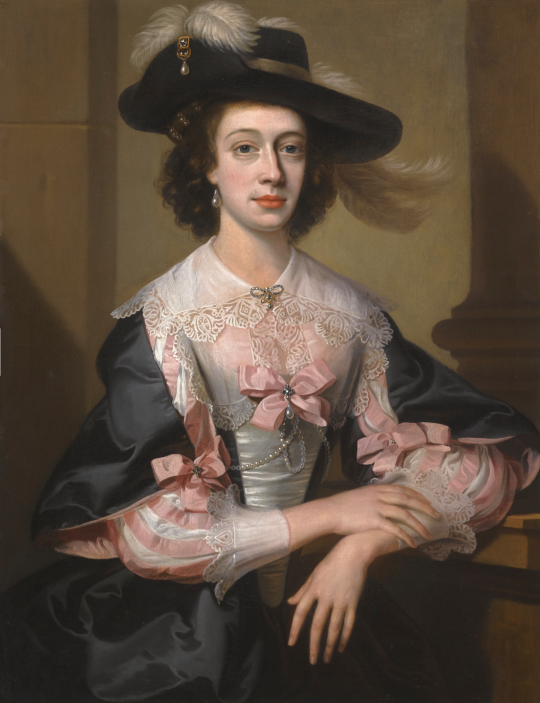
Susan, Mrs. Henry Hoare by William Hoare of Bath (auctioned by Sotheby's). From their Web site; navigation marks and a few spots in the background removed with Photoshop 1595X2077.
#1730s fashion#Georgian fashion#Rococo fashion#Louis XV fashion#Mrs. Henry Hoare#William Hoare of Bath#feathered hat#paned sleeves
74 notes
·
View notes
Text

Here is a collection of all the character playlists I have created in honor of the Davechella event, which I find very special. Under the cut will be each link, although for ease of convenience unlike my playlist posts, only the link shall be included not the listed out songs.
We've got Thomas Farr, Frederick Hornby, Francis Pocock, Charles Best, Collins, Billy Orren, John Hartnell & John Torrington, Silna, Tuunbaq, The Franklins, Crozier, JFJ, & Sophia, all the lieutenants, all the doctors, all the marines, William Gibson, John Bridgens, Harry Peglar, Edmund Hoar, Richard Aylmore, Genge!, Hickey, Diggle, Wall, Armitage, Golding, Thompson, Thomas Blanky, Tom Hartnell, Mr. Reid, George Chambers, David Young, & Thomas Evans, Magnus Manson, Charles Des Voeux, Original Hickey & John Morfin
Recently Added: 2 Jacko playlists, Neptune, Fagin, William Strong, Samuel Crisp, & Sir John's Leg
PLUS Silna's Father, Koveyook, James CLARK Ross, his translator, and the Netsilik Hunter :)
Silna [LINK]
Tuunbaq [Link]
Lady Jane Franklin [LINK]
Sophia Cracroft [LINK]
Command
Sir John Franklin [LINK]
FRM Crozier [LINK]
James Fitzjames [LINK]
Lieutenants
Edward Little [LINK]
John Irving [LINK]
George Hodgson [LINK]
Graham Gore [LINK]
Henry Le Vesconte [LINK]
James Fairholme [LINK]
Thomas Jopson [LINK]
Stewards
William Gibson [LINK]
John Bridgens [LINK]
Edmund Hoar [LINK]
Richard Aylmore [LINK]
Genge! [LINK]
Doctors
Dr. Henry Goodsir [LINK]
Dr. Alexander McDonald [LINK]
Dr. Stephen Stanley [LINK]
Dr. John Peddie [LINK]
The Marines
Solomon Tozer [LINK]
Private Heather [LINK]
David Bryant [LINK]
William Pilkington [LINK]
Robert Golding [LINK]
George Thompson [LINK]
William Braine [LINK]
John Hammond [LINK]
Robert Hopcraft [LINK]
Henry Wilkes [LINK]
William Reed [LINK]
James Daly [LINK]
Joseph Healey [LINK]
William Hedges [LINK]
Ship Crew
Thomas Blanky [LINK]
Tom Hartnell [LINK]
Mr. Reid [LINK]
Harry Peglar [LINK]
"Cornelius Hickey" [LINK] {ORIGINAL VERSION}
Hickey [LINK] {REHASH}
Thomas Armitage [LINK]
Mr. Wall [LINK]
Mr. Diggle [LINK]
Magnus Manson (link)
Charles Des Voeux (link)
John Morfin [LINK]
Francis Pocock [LINK]
Frederick Hornby [LINK]
Thomas Farr [LINK]
Charles Best [LINK]
Billy Orren [LINK]
Henry Collins [LINK]
Samuel Crisp [LINK]
William Strong [LINK]
Ship's Boys
David Young [LINK]
Thomas Evans [LINK]
George Chambers [LINK]
Important Characters
Koveyook [LINK]
Silna's Father [LINK]
James Clark Ross [LINK]
Translator [LINK]
Netsilik Hunter [LINK]
Cornelius Hickey [LINK]
Sir John's Leg [LINK]
Animals
Fagin [LINK]
Jack [REAL] [GONE TO HEAVEN]
Neptune [LINK]
Beechey Boys
John Hartnell [LINK]
John Torrington [LINK]
#terror playlist heaven or hell#davechella#john morfin#charles des voeux#magnus manson#richard wall#john diggle#cornelius hickey#thomas armitage#william hedges#joseph heeley#william pilkington#solomon tozer#william heather#stephen stanley#henry goodsir#john peddie#alexander mcdonald#thomas jopson#james fairholme#graham gore#henry le vesconte#dundy#john irving#edward little#george hodgson#james fitzjames#jfj#crozier#john franklin
112 notes
·
View notes
Text
FO'C'SLE OF HMS TERROR,

This present Thursday, being the 4th October, 1845, Will be presented a PLAY, call'd
ROMEO and JULIET
Prologue by Lieutenant Graham Gore Prince by Captain Francis Crozier
Romeo by Mr Thomas Hartnell Lord Montague by Mr Henry Foster Collins Mercutio by Mr Cornelius Hickey Benvolio by Mr William Orren
Juliet by Mr Thomas Evans Lord Capulet by Dr Stephen Stanley Lady Capulet by Commander James Fitzjames Tybalt by Sergeant Solomon Tozer Nurse by Mr Thomas Blanky Friar Laurence by Mr John Bridgens Paris by Lieutenant Henry Le Vesconte Ensemble by Mr David Young, Mr Henry Foster Collins, Mr Magnus Manson, Mr Charles Des Voeux, Private William Heather, Mr Thomas Armitage, Mr Charles Best, Mr William Strong, Private William Pilkington, Mr John Diggle
With thanks to...
Director: Lieutenant George Hodgson Assistant Director: Lieutenant John Irving Stage Manager: Mr Harry Goodsir SFX Artist: Dr John Peddie Set Designer: Lieutenant Edward Little Head Costumer: Mr Thomas Jopson Assistant Costumers: Mr William Gibson, Mr Edward Genge, Mr Edmund Hoar Set Builders: Mr John Weekes, Mr Thomas Honey Welfare: Dr Alexander MacDonald Enabl'd by our generous patron, Sir John Franklin, and God.
To begin exactly at Six o'Clock. Grog provided.
#🧤: we held hands for this one#the terror#amc the terror#we could technically tag every character but are not gonna do that#romeo and juliet#stuck in the pack ice? stage shakespeare. duh!
34 notes
·
View notes
Text
Well, I wanted to procrastinate, so i made this list of what each little likes watching. They share some favourites with eachother of course, but I didn't want to repeat shows, so each appears only once.
All of these supposedly ran on the TV in the UK in the 2000s but definitely in Czechia. I only chose the shows I watched, so I'd be familiar with what I'm assigning. Some of these are very dear to me........ some not. But I don't judge the littles.
Now let's get to it shall we?
What shows would the littles like watching in modern era?
Ned Little - Timmy Time and LazyTown (my comfort character paired with my comfort shows? no.......... yes.)

Henry Collins - Strawberry shortcake (the old one) and Elmo's world

Henry Peglar - Louie (draws along every time). And also Postman Pat

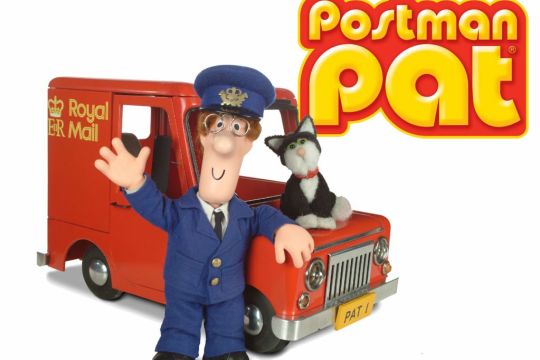
Billy Wentzall - The fairly oddparents and Little Princess

Gram Gore - Powerpuff girls and Pokémon (screaming the name at 'who's that pokémon?')

Sol Tozer - Clifford the big red dog, I don't make the rules. Also Ben 10 (the 2005 series)

Billy Pilkington - Little red tractor and Angelina ballerina (the 2D version) but he wouldn't admit to that at gunpoint.

Johnny Irving - The Magic Roundabout when he's kid and when he's baby Teletubbies of course

Tommy Armitage is on that Pingu soup. Also Bill and Ben


Sophy Cracroft - Shaun the sheep and Littlest pet shop (collects the pets also)

Tom Jopson watches Maisy Mouse and Oakie Doke

Steffie Stanley - Mr. Bean: The Animated Series and Chuggington (no logic, pure vibes)

Harry Goodsir - Wallace and Gromit and also Deadly 60

Davie Bryant - Batman: The Animated Series and Fireman Sam

Georgie Hodgson watches Kim Possible and H2O: Just Add Water even when he's not little...

Neil Hickey doesn't really watch cartoons but if, then Schooby Doo - he's cheering for the monster to win. Also Animalia (cheering for the weasel what's-his-name)

Charlie Best - 64 zoo lane and Noddy

Chas Des Voeux - Horrible Histories. Also Igam Ogam (which I have to say I absolutely despise, but go off, Chas)

Billy Hoar - Thomas the tank engine and friends and also Phineas and Ferb

Johnny Morfin - Pablo the Little Red Fox and Blue's clues

Jamie Ross - Chip 'n' Dale Rescue Rangers (I think I'm funny) and Bob the builder

+ bonus Frankie Crozier - Moomin and also Adventures of the Gummi Bears

2 notes
·
View notes
Text
Rating AMC The Terror character names by how transmasc they sound
Harry Goodsir- self explanatory. amusing yet effective. 10/10
James Fitzjames - the moonmoon of men. manman. Genericman McMan. love it. 9/10
Henry Peglar - I bet you do. 7/10. This would be a good moment to disclaimer that i cannot tell any of the minor characters apart and i have no intention of checking which ones i'm talking about.
Magnus Manson - overdid it. you have to chose, it's either man or son. i like the first name though, very butch, very overcompensating. 5/10
William Strong - basic. 2/10
John Morfin - what are you morfin into? a man? I'm so happy for you for starting hrt! 6/10
Graham Gore - had his trans awakening watching nbc hannibal. 3/10
Charles Best - his ex also chose the name charles and he decided to be petty about it idk I'm running out of ideas. 1/10
Edward Little - yes manlet pride!!! 8/10
Edmund Hoar - drag king name at best. how entertaining it is varies wildly by accent. 4/10 Also i just remembered all of these were real living people that will definitely come back to haunt me for this.
honorable mention to Cornelius Hickey for not only canonically being an assumed name, but also being just enchantingly fake-sounding. mr Weirdname Fucks. indeed he does. mr. first name: jughead riverdale weirdo monologue last name: messy breakup guaranteed
#the terror#amc the terror#I'll see myself out of the fandom now thanks for having me#cornelius hickey#james fitzjames#harry goodsir#mine
154 notes
·
View notes
Photo
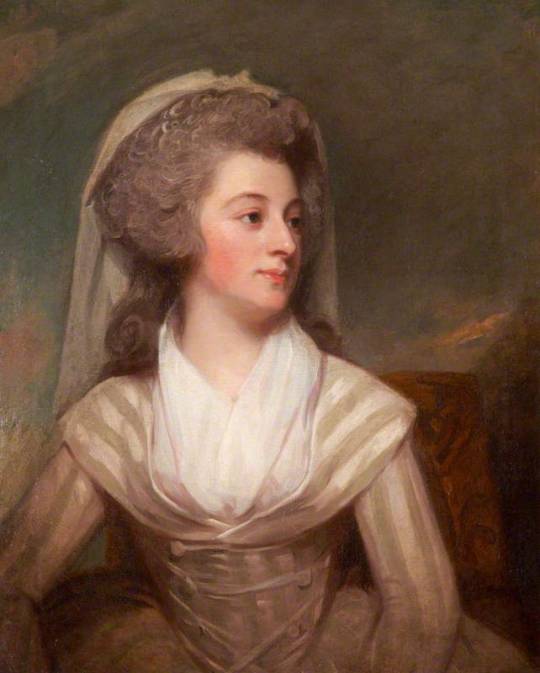
Lydia Henrietta Malortie (1754–1816), Mrs Henry Hoare, 1784, George Romney
51 notes
·
View notes
Text
Queen Elizabeth II with Princess Anne, Prince Charles and the Queen Mother at the meet of the West Norfolk Foxhounds at Westacre. With them are Major Robert Hoare, Captain Henry Birkbeck and his wife Mrs Birkbeck with their son Henry. 1958
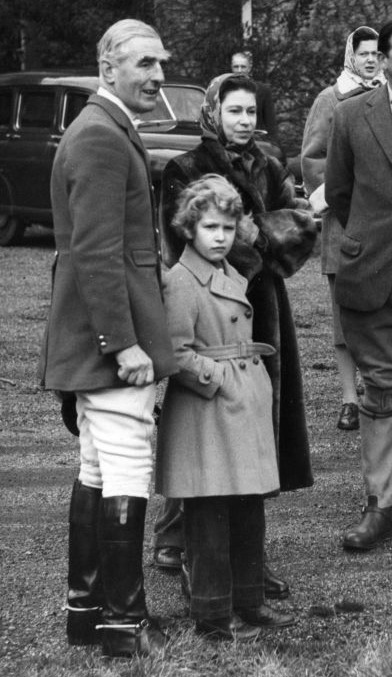
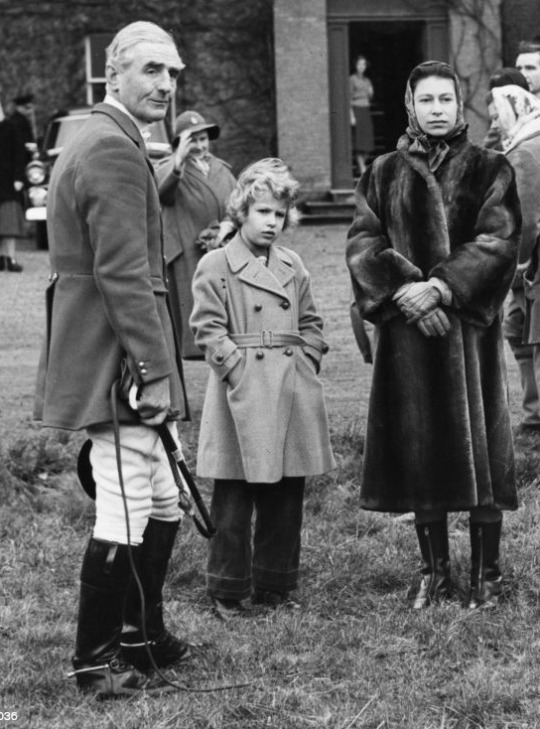

#british royal family#queen elizabeth ii#princess anne#princess royal#prince charles#prince of wales#queen mother
23 notes
·
View notes
Text
July 1845: Aurora Borealis
After some twenty years in the Navy, Henry has not been surprised by anything he's seen at sea for about a decade, until a fateful Middle Watch, early on the expedition.
Read on AO3
After some twenty years in the Navy, Henry had stopped being surprised by what he saw about a decade ago. Not that he didn’t enjoy new sights, far from it; he was always delighted to discover parts of the world, but after three crossings of the Atlantic and then some, he was able to keep his breath and remain grounded upon seeing something that had other sailors frozen in wonder.
A decade, until now. They had just passed the tip of Greenland and Henry, while on a very unfortunate Middle Watch on the main deck, witnessed something that did steal his breath.
The ink of the sky suddenly came alive with what looked like clouds, though much longer, less opaque, and almost like they were dragged up, leaving a trail of light—and the colour! They were mostly green, but Henry could see some purple and blue mixed in as well, shifting and changing with their slow movements in the dark. He could not take his eyes away.
The name of this phenomenon was on the tip of his tongue. He had read about it, he was sure. Some Arctic explorer’s memoir, read in preparation for this trip, but he could not recall. Oh, how easy it would have been to simply turn to John and ask him. It was strange, to be so far apart yet so close, just a mile or so of water between them—impossible to cross without a good reason for it, for non-commissioned officers like himself, at least.
Maybe that was his ticket across. Sir John Franklin invited Captain Crozier to dinner on Erebus so often that they had to come up with a flag signal instead of constantly sending some boys, who always ended up completely drenched, to and from each ship to carry invitations and replies. But they still needed rowers for the Captain and Lieutenants. If he could volunteer to take Captain Crozier across, he’d get to spend the evening on Erebus. Maybe he’d be able to catch John between two courses. He didn’t need to talk to him for very long—they couldn’t, of course, but just enough to ask him about what he had seen in the sky. Yes. That was his plan. Henry tilted his head back and kept staring at the swirls of colour, a small smile on his lips, until they disappeared in the rising light of the early morning—the end of his watch.
What are the lights called? What are they called? John would know.
~~~
Much like the Erebus bearers of invitations, Henry ended up drenched and burning-armed. Though neither of these things was able to put a damper on his enthusiasm at the possibility of talking to John—no matter how busy he could be during dinner. Henry found a seat in the mess hall which allowed him to keep an eye on the great cabin. When he saw John emerge from it, empty-handed, meaning the officers had been served and would be eating for some time, Henry excused himself from his table.
Henry was surprised again to experience something that hadn’t occurred in a long time, not unlike his wonder at his sighting of the green dancing lights—he felt a kind of worry, a nervousness, while approaching John. It would be the first time they saw each other since their departure from Greenhithe last May—not the longest time they’d been apart, but Henry put his nervousness on account of having to make sure to keep their interactions inconspicuous while they served together on the expedition. The last time that happened was some nine years ago, on Beagle, and even then, that was before becoming more than simply friends. But Henry took a breath, and kept going forward.
“John!” he called.
John, who currently had his eyes closed and his back against the wall next to the great cabin door, immediately perked up at the sound of Henry’s voice. The smile he gave him was enough to melt all nerves away. John took the few remaining steps between them, though kept a reasonable distance.
“Henry, what a wonderful surprise to see you aboard,” John greeted. “I must ask, how did you manage such a feat?”
Henry shrugged, but his smile quickly turned to a grin. “Captain Crozier and his officers have dinner with Sir John often enough, I figured one of the usual rowers wouldn’t mind getting a break. I just had to volunteer.”
“Rowing! How are your arms?” John gently set a gloved hand on Henry’s bicep.
“Not too bad.” Henry rolled his shoulders a few times. “Better than when I started working up in the rigging. D’you remember that?”
John let out a low laugh. “Quite. Had I known you less at the time, I would have thought you were trying to get out of your writing lessons the way you complained about sore arms and not being able to hold a pen.”
Henry almost reached forward to sink his head on John’s shoulder and join in with his laughter, but held back. He let his smile widen instead, relishing in the simple contact of John’s hand on his arm. John scanned the area around him to make sure he was not needed right this moment.
“Though I doubt you came all this way to reminisce about the past,” John said, tilting his head to the side inquisitively.
“Other than for the pleasure of your company?” Henry noticed the blush spreading on John’s cheeks, and felt the way the hand on his arm tightened just a bit. “There was something I wanted to ask you, in fact.”
“Oh?”
“I was on Middle Watch—”
“Middle Watch? Christ, that’s dreadful.”
Henry snorted. “Yes, it tends to be quite awful, but I saw something in the sky—I was very much transfixed, but couldn’t remember how what I witnessed was called. I figured I’d come and ask you.”
In the low light of the deck, John’s eyes sparkled as he widened them. Henry knew that as a steward, John did not have much opportunity to go on the main deck, especially not between midnight and four in the morning. “What did you see?”
Henry pressed his left hand over his heart, and fiddled with the buttons of his sleeve with his right.
“Lights! Trails of lights all over the sky—green, blue, and purple. They didn’t look like clouds, they were translucent, almost. And they moved in such a fascinating manner! Does it sound like anything you know?”
“I believe it was an aurora borealis,” John replied, his smile warm. “It seems we’re up north enough for us to be able to see them.”
Aurora borealis. Henry sounded out the two words in his head, then visualized printing each letter down on paper. He’d have to make sure to take note of it in his diary. The hand he had placed on his chest moved to the side just a bit—to briefly touch the fabric of the glove John was wearing.
“You really know everything.” Henry looped his fingers around John’s index. “Th—”
“Bridgens!” Hoar exited the great cabin, having stayed behind while John was out to keep the officers’ glasses full. John and Henry instinctively broke apart at the sound of his voice. “We’re about to start on the next course, better get in here.”
“Of course, Mr. Hoar.”
John gave Henry an apologetic smile before turning away from him and following Hoar down the mess hall to the kitchen. Henry watched him, before returning to his previous seat, where John Hartnell, his brother Tom, and William Orren were discussing with passion whether or not their tinned food was any good. Henry joined in—At least we have tins; when I was on the Marquis Camden in ’28, we were lucky to have anything other than ship’s biscuits!
~~~
Just as they were set to depart, dinner wrapping up in the great cabin, John passed by Henry’s table and set a book down next to him. Henry looked at it, at John’s hand, still gloved, then up to John’s face.
“Oh—I wouldn’t want to risk damaging it, John.”
“Hush, you,” John reassured. “Books are meant to be read and worn down. And they’re mine; I do with them as I please. Will you take it?”
With a great smile—which John returned—, Henry nodded enthusiastically. John patted his shoulder and walked down the mess hall, leaving the first volume of Herodotus’ Histories on the table. Already, Henry could tell John had left him a note in-between the pages.
When he was dressing to get back on the small ship, he tucked the book in his breeches, under his guernsey, waistcoat, coat and slops to give it the best protection he could. Rowing back to Terror, the sun having set some hours ago, the sky was alight with auroras. A book pressed against his stomach, a breathtaking sight above him, and the memory of John’s hand on his arm, of having seen John at all—Henry could hardly complain.
#henry peglar#john bridgens#bridglar#bridgens x peglar#the terror#i've said it before and i'll say it again: i don't care what dimmons wrote in his book#john and henry didn't 'break it off' after a few months they've been in love for YEARS#14 to be exact. because i write them in love since the first year they met on hms beagle in 1831#okay okay i've rambled enough!!!! please enjoy#my writing
19 notes
·
View notes
Photo
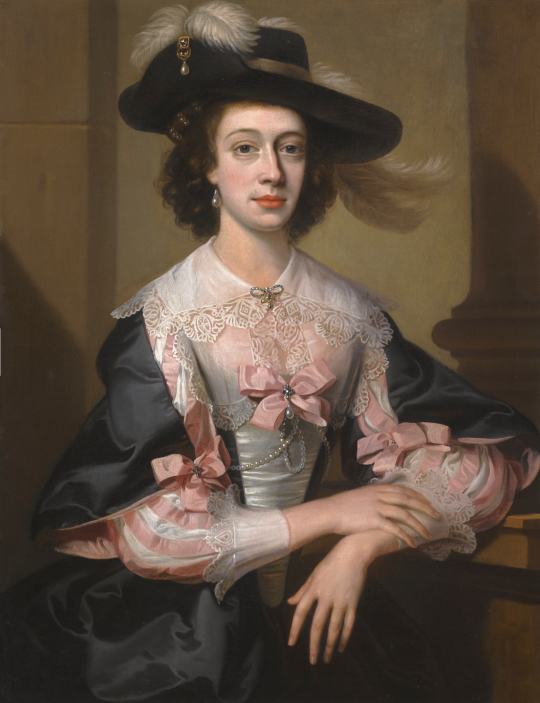
Susan, Mrs. Henry Hoare by William Hoare of Bath (auctioned by Sotheby's). From their Web site; navigation marks and a few spots in the background removed with Photoshop 1595X2077.
#Georgian fashion#Rococo fashion#Louis XV fashion#Susan Hoare#William Hoare of Bath#van Dyck revival#lace collar#brim hat#hat feathers#paned sleeves#back-flared cuffs
13 notes
·
View notes
Photo
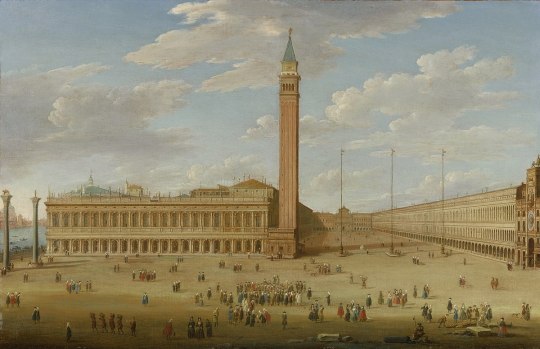
Hendrik Frans van Lint - Venice, a view of the Piazza San Marco with the Piazzetta -
Hendrik Frans van Lint (1684 – 24 September 1763) was a Flemish landscape and vedute painter who was part of the group of Flemish and Dutch painters active in Rome. He was one of the leading landscape painters in Rome in the first half of the 18th century and his patrons included Rome's old aristocratic families as well as European travellers on their Grand Tour.
Van Lint was specialized in landscapes which fall globally in two categories: idealized landscapes of people in nature and ‘vedute’, landscapes or town views that are mainly topographical in conception. Among his earliest dated works produced in Rome are paintings from 1711, including View of a monastery on the Aventine, now in the collection of the Galleria Doria Pamphili. It has been suggested that this was the year in which he left van Wittel's workshop to strike out on his own.
His idealized landscapes follow less the style of his contemporaries and compatriots Abraham Genoels and Jan Frans van Bloemen, who specialized in this subject matter. Van Lint went in a different direction under the influence of Claude Lorrain's Arcadian landscapes. Van Lint may have studied Lorrain's works in numerous Roman collections. It has been suggested that van Lint started out as a reluctant copyist of the work of Lorrain whose work was in strong demand but unavailable on the market. It was only later that he started to paint his own compositions inspired by and dotted with references to Lorrain as well as Nicolas Poussin.
A good example of the influence of Lorraine on his idealized landscapes are the pair of paintings entitled Landscape with a Watermill and Dancing Figures (The Wedding of Isaac and Rebecca) and Landscape with the Nurture of Jupiter (private collections). The two compositions are directly inspired by Lorrain's monumental pair of landscapes in the Galleria Doria Pamphilij, Rome. In particular the first work is directly based on Lorrain's Landscape with Dancing Figures (The Mill), while the second is only inspired in its overall design by Claude's original of the View of Delphi with a procession. Van Lint was no slavish follower of Lorrain but rather an inventor of his own as shown by the fact that he introduced a number of elements that are absent from Claude's work, such as the hound in the centre or the shepherd leading his flock over a bridge. Van Lint also shows that he is at heart a vedute painter who preferred realistic views by substituting for Claude's fantastical domed palace a representation of the Colosseum and a monument that he had depicted on numerous occasions in his Roman vedute and may be based on an existing feature in Rome. Like Lorrain, van Lint paid particular attention to the trees in his compositions. His wide open compositions are imbued with silence and invite contemplation. It has been argued that van Lint adapted Lorrain's style to 18th-century taste by using paler and clearer tones, prettier colours and sharper handling.
In his topographical views van Lint was first directed by his experience working for van Wittel. His earliest topographical views (vedute dal vero) of Rome included sweeping panoramic views of the city from many different approaches and locations. Eventually he painted everything worth seeing in Rome which resulted in many views of similar subjects such as the Colosseum, the Arch of Constantine, the Pyramid of Cestius, and the Baths of Diocletian and Caracalla. Van Lint painted many views of Rome's bridges, which he rendered with a mixture of naturalism and poetry. His sharp powers of observation make him stand out as a vedute painter in the 18th century.
Van Lint painted also many views of the waterways, waterfalls and harbours around Rome and beyond. These include views of Naples and Venice, cities for which there is no documentary evidence that he actually traveled there. It is likely he developed these compositions on the basis of van Wittel's treatment of similar subjects.
While van Lint is known to have employed other artists such as Corrado Giaquinto, Adriaen Manglard, Anton Raphael Mengs, Pierre Subleyras, Sebastiano Conca, Giuseppe Chiari and Placido Costanzi to paint the staffage in his landscapes, he often painted the figures himself. The only artists whose figures have been identified in his work are Pompeo Batoni and Francesco Zuccarelli. The figures he painted in his compositions were often inspired by those of famous painters of the 17th century such as Guido Reni.
Henry Hoare's print collection at Stourhead is thought to have been hand-coloured in a collaborative effort by Hendrik van Lint and his son, Giacomo. In a manuscript catalogue the colouring of these prints is attributed to a 'Mr Studio'. The technique is consistent with Hendrik van Lint's paintings but evidence, including a recorded comment regarding the 'young Studio', suggests that the colouring may have been a family enterprise.
18 notes
·
View notes
Photo
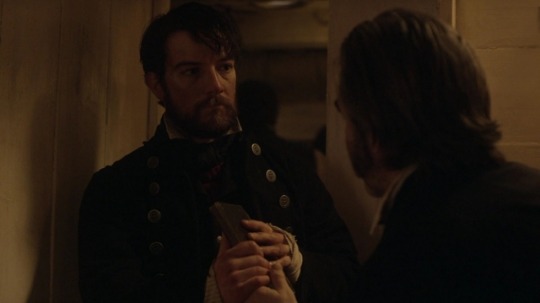
The Terror Anniversary Appreciation Week ↳ Favorite Scene: Bridgens shares Anabasis with Peglar, “A Mercy” (x)
“They walked for hundreds and hundreds of miles, through desert and snow, with no food and attacked on their flanks. But they made it, Henry.”
(Pardon me as I casually crib from my own tags:
#this scene is everything #from henry’s soft ‘mr. hoar said you were looking for me’ #to john putting away his mending #to henry’s confession of why he’s berthing on erebus #to the growing aura of menace surrounding john’s tale of the ten thousand #to the heart-piercing way they look at each other at the end #and give comfort through touch without drawing any notice at all #in that moment everyone else around them has disappeared #and they are in a world entirely by themselves #dig my grave and bury me in it)
52 notes
·
View notes
Text
Landscape and its theoretical readings
In this lecture we went through the theories around the landscapes such as the sublime, artificial and the natural and the way they impacted literature and art.
In the 15th century, people were apprehensive of nature, the power held in the environment that they couldn’t control intimidated them, thus the gardens had an element of control, by shaping the bushes and trees in a very structured way, it made it, so people felt like they were conquering a fear. However once travel became more accessible aristocrats looked at renaissance paintings and went on the ground tour. They started to believe that there wasn’t something to fear but instead admire…it became the topic of the day. Gardeners learned from these paintings how to structure the gardens and how the eye should follow the area, they would use a HA-HA a barrier which makes it so when one is standing on the upper side they can’t see the wall, however there is still a structure from stopping animals from going in to other side or to just separate the garden. As people travelled, they would bring back plants which were never seen before the United Kingdom such as magnolias. The fashion for American plants is due to interest of men such as Charles Hamilton, he started placing oriental vegetable gardens, by making what is beautiful practical as well. There were several individuals which stud out to me in this session, such as Thomas Cole and Caspar David Friedrich, two artists that encapsulated the beauty of nature, ‘Capability’ Brown and his array of what seem now like natural sets of gardening but in reality, were artificially made and Humphrey Renton and his beautiful watercolour sketches.

Thomas Cole, travelled to America not to bring back flowers or plants but to capture the vast landscapes, for example ‘Distant View of Niagara Falls’ is an incredible painting which presents the power and beauty of this location, while having small individuals within the painting to remind us the scale of this place. This movement was travelling into Europe as well, Caspar David Friedrich has similar paintings in ‘Wanderer in the Mists’ he presented people with curiosity of the unknown rather than fearing it, they began to see Gods power within nature, that only the divine could create something of such awe, this is known as the Pantheon. Samuel Palmer ‘The Harvest Moon’ had similar work with landscapes of the United Kingdom, this work also influenced Constable, in his ‘study of the trunk of an elm Tree’ which not only showed an incredible technique but also the mystical side of nature.

‘Capability’ Brown Serpentine Landscape in Petworth, West Sussex shows the structure gardens began to take in lakes, this was documented by Hogarth and said this was the line of beauty, we would never have something as beautiful. ‘Capability’ Brown became well known and the scenes we may consider natural were artificially structured with each section meant to serve a purpose, there would be an arable section, graze heading for the animals and little follies for parties, he would use trees and HA-HA to separate the structures. This can be seen in Thomas Gainsborough ‘Mr. and Mrs, Robert Andrews’ presented in the areal perspective, this painting could be seen quite subtle, it meant that people could appreciate the beauty the small things, instead of having a grand statue. ‘Capability’ Brown became well known and liked by the aristocrats, he became a royal garner, which brought up hate and jealousy in literature against him.
That’s not to say there weren’t other people which had an interest in landscapes and structures of gardening, William Chambers went on to travel in China to study more oriental gardening, this can be seen in his Chinese Pagoda, in contrast to ‘Capability’ Brown his work was more dramatic, he eve went on to design the royal carriage. People like Thomas Jefferson travelled to the U.K due to his inquisitiveness in gardening and brought his findings in Monticello. Henry Hoare’s work in Stourhead Park in Wiltshire, captured artist such as Turner, he ensured the commissioned architectural pieces, such as artificial castles; this was often done in a constitution like the pantheon however that later developed into English medieval structure, which lead to the romanticism.
We also looked at work done by Humphrey Renton’s, he created garden structures in a more soft composition, even less grand than ‘Capability’ Brown, as he was working in a time were the industrialisation was staring to begin and middle classes were moving on to have estates like the aristocrats, however they were not willing to place the gardeners in such labour. Repton created water colour paintings and sketches of gardens to show clients how the land would look in his red book. In this book we can find notes of what tips and advice Repton gave to his clients as well as have an understanding of how people would have worked, behaved and dressed at the time.
To conclude, this lecture was new and fresh to me, when thinking of art history, honestly gardening isn’t something that comes to mind but like architecture, sculptures and paintings, gardens can represent the mentality of the people at the time, allowing us to understand what strove literature and fine art works.
2 notes
·
View notes
Text
Forward though I cannot see, I guess and fear
Hey! I guess I’m writing Bridglar stuff now! But AO3 won’t give me an account for another four days or some such nonsense. So here, have a chapter of ..... something.
John Bridgens paused in the wardroom’s entry, ensuring the Terror’s officers were out of view, then leaned against the wall and closed his eyes. Irving, Hodgson, and Doctor MacDonald were suited up for the trek back to their ship - the pile of coats, mufflers, mittens, and snow gaiters, only half-thawed by the wardroom stove, assigned back to their owners with Bridgens’s assistance - yet Blanky remained in the Great Cabin, in hushed and apparently earnest conversation with Captain Fitzjames.
Well. When he’d dismissed the lieutenants, the captain had said they would not be much longer in their business. Then John could clear away the tea, and hopefully retire to his own cabin for a few rare moments of peace.
Three weeks since Terror’s men had begun removing to Erebus, and John wanted little more than a few minutes of quiet. Each day additional crew arrived to crowd the decks, and with command meetings grown to a near-daily occurrence, even the officers who remained berthed on Terror were present and requiring a steward’s attention more often than not. He’d worked out weeks ago exactly why it was that Captain Crozier and his own steward remained hidden away, why command meetings could not be held on Terror - Captain Fitzjames was, after all, hardly difficult to read in his frustration, and the men did talk. Not to mention the number of nervous, whispered, and otherwise ill-disguised conversations Fitzjames had taken to conducting with those closest to Crozier, such as that in which he was now engaged with the ice master. John knew the gravity of the situation. And for the most part, he went about his duties with practiced and patient reserve.
But the fact remained that although Henry had arrived on Erebus days ago, all John had seen of him was his infectiously joyful smile, as he caught his eye across the crowd. Henry laughing at some story an Erebite was relating to the newly united crews, but the light in his eyes as he looked at John... at least, John hoped, that was for another reason altogether.
They hadn’t meant to be on separate ships. Both had intended to sign on with Erebus, but Henry’s years of experience saw him promoted to a captain of the foretop, and as the opportunity arose to sign on to Terror in a higher position... John was desperately proud of him, and wouldn’t hear of him turning the chance down. It was a year, maybe two, in the Arctic, they had thought. With opportunity to see each other when they were docked in Greenland, and if the ships were forced to overwinter. And Henry could take extra duty manning the boats to bring officers between ships, some days. An inconvenience, but worth the extra pay and higher rating.
And yet here they were, spending a third winter in the ice, both of them lucky not to have lost any parts of themselves to the cold and the wind. These were the blessings they counted now. Henry had indeed made the journey between the ships when the occasion arose, but God damn if John would ask Henry to risk any bit of himself in that icy hell just for the chance that they might catch sight of each other, or brush hands in passing as John went about his duties. And so they’d spent the last three years communicating mostly through notes smuggled to each other in books borrowed and returned. Always tucked in with the thirty-second page; thirty-two for the year they had met aboard the Beagle. John noted that Henry’s letters on the goings-on aboard Terror, while still charmingly untidy, had improved greatly in spelling over the last winters, and wondered (not without a slight amount of jealousy) with whom he might have been spending his unoccupied hours studying. He made a point to tease Henry about that when they finally had a chance to speak. Just that morning, John had scratched ”find me - J” onto the thirty-second page of Candide, and hastily handed the book off to Mr. Hoar with instructions to deliver it to “his old friend Mr. Peglar.” Now he would just have to wait for Henry to follow through.
John sighed and pushed himself off from the wall, screwing his face into its usual unreadable expression. It would never do for the captain to see him scowling in a corner, nor had he time to wallow in lost possibilities and vanished plans, should he chance to see Henry that evening. The best laid schemes o’ Mice an’ Men, he thought to himself, Gang aft agley, An’ lea’e us nought but grief an’ pain, For promis’d joy!....
Far better to return to his work than brood and have his brain recite poetry at him, he thought. Mr. Blanky and the captain were yet occupied in the Great Cabin. Perhaps the tea needed refreshing; at the very least he should inform Captain Fitzjames that the Terrors were readying to set off. Crossing to where Great Cabin, he raised a hand to knock - but stopped, frowning, at the sound of Blanky’s voice through the half-closed door. Something in the severity of his tone... he liked it not at all. And he heard:
“If we’re going to walk out of here ourselves, and nearly three times as far, you need to understand that it wasn’t sickness or hunger that most mattered to our chances. It was what went on up here. Notions. A darkness.”
The voices, and the room around him, and the creak of the ship in the ice, and the cold… it all fell away. The ice fields became desert, and then ice again. A ragged band of figures straggling through a void of white.
It was an ancient story, one he knew from his childhood. When he had been inclined to see it as a tale of glory. The triumph of civilization over the forces of nature, and of enmity. The adventure of a lifetime.
The March of the Ten Thousand.
No. That wasn’t the correct translation.
The Retreat.
The Anabasis.
#John Bridgens#Henry Peglar#surprising no one Bridgens likes Burns#sends a bunch of the sappy stuff to Peglar#Peglar may also have discovered that poem John Anderson My Jo#and done some annotating#(evil cackle)#oh shit its my OTP
13 notes
·
View notes
Text
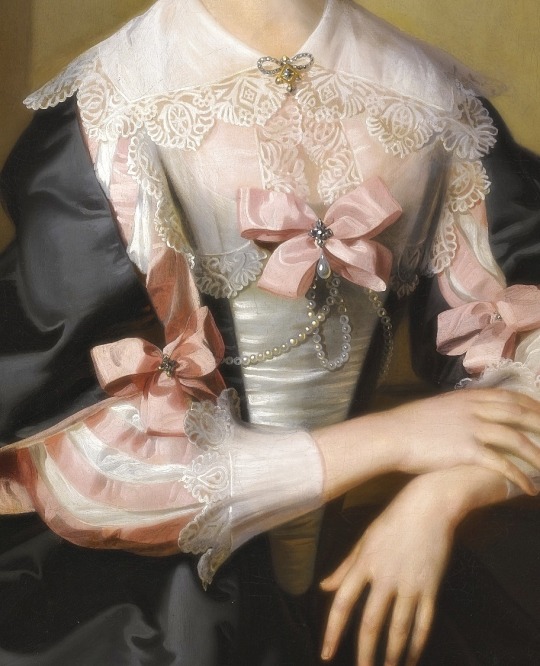
Susan, Mrs Henry Hoare of Stourhead, Detail. (1743) by William Hoare of Bath (1707-1792) detail
1 note
·
View note
Photo
1. All my character tags are last name only because quite frankly I couldn’t be bothered to keep up with anyone’s first name when I still couldn’t tell their faces apart
2. …there’s a Mr. Hoar??
3. My claim to fame is that I once correctly guessed Dundy’s first names (Henry Thomas) based only on the magic of probability
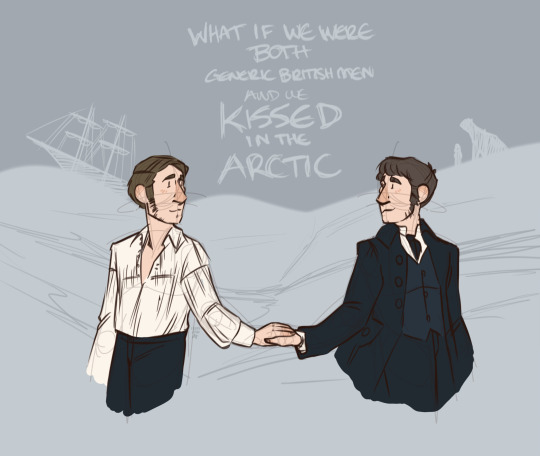

‘And Horatio Bunglesnap And Second Lieutenant James Glop McGlop Were In Love, Too,’ said the fandom at large.
@ajcrawly thank you for this post which has haunted me since june
242 notes
·
View notes
Photo
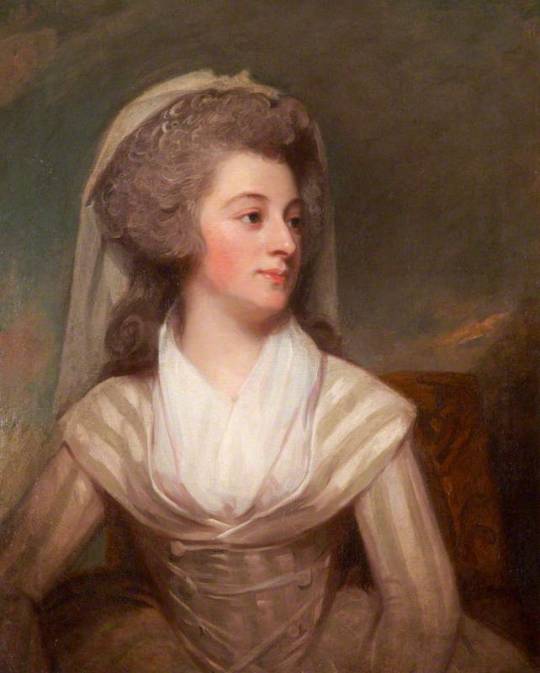
Lydia Henrietta Malortie (1754–1816), Mrs Henry Hoare, 1784, George Romney
https://www.wikiart.org/en/george-romney/lydia-henrietta-malortie-1754-1816-mrs-henry-hoare-1784
7 notes
·
View notes